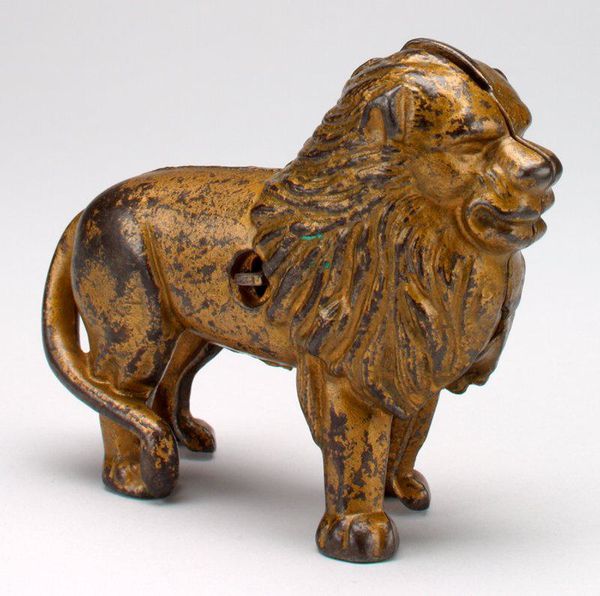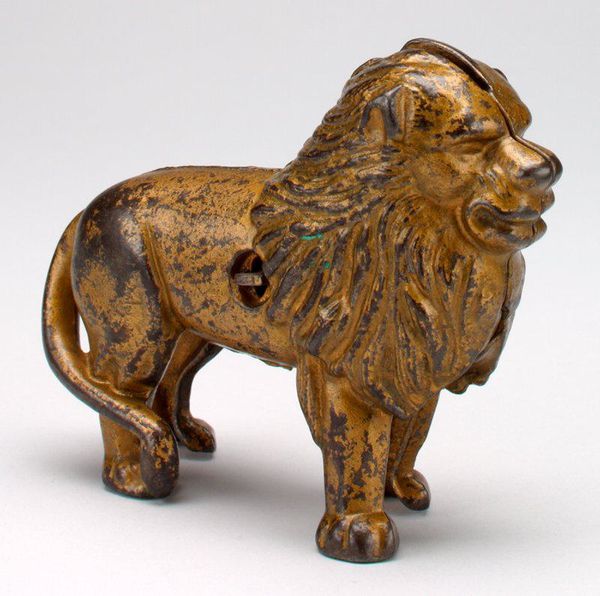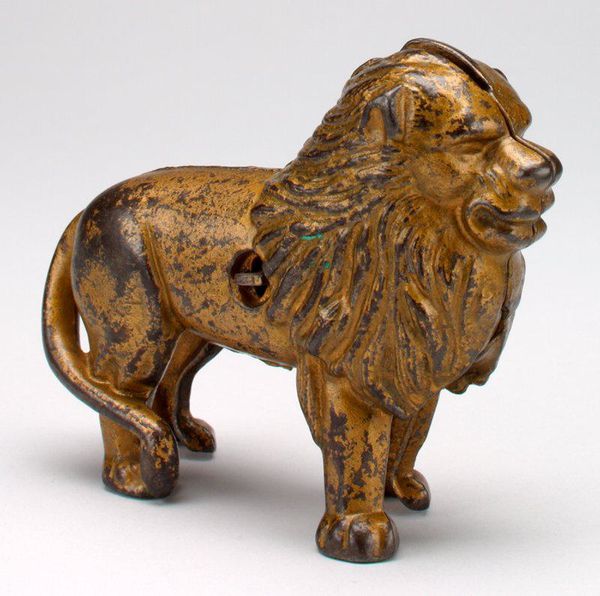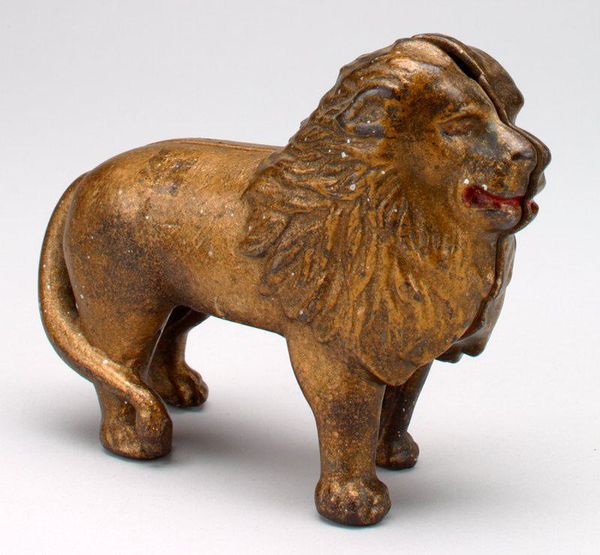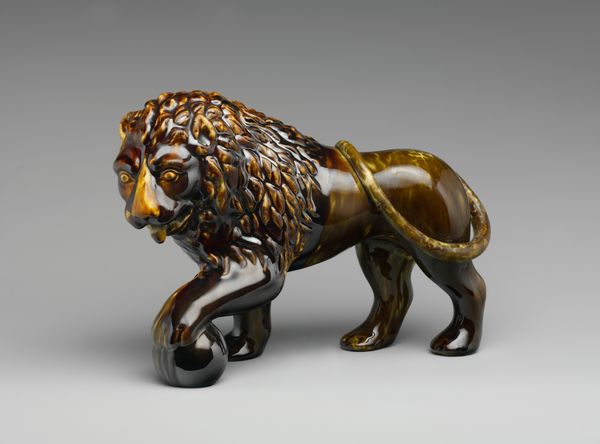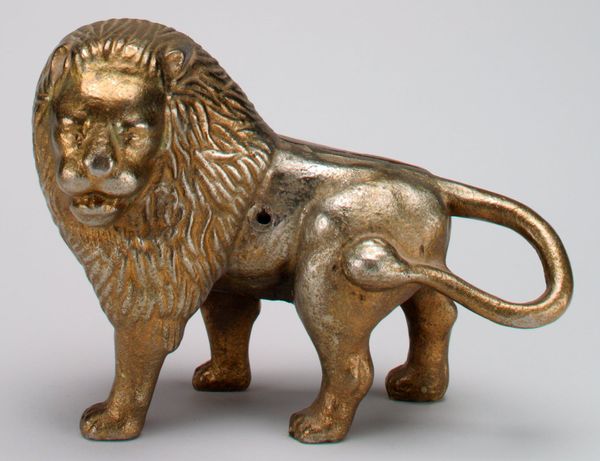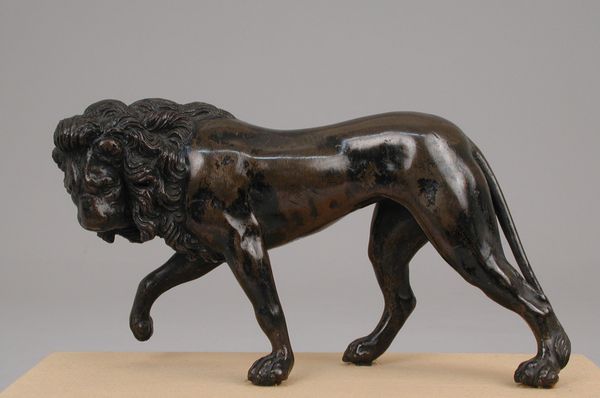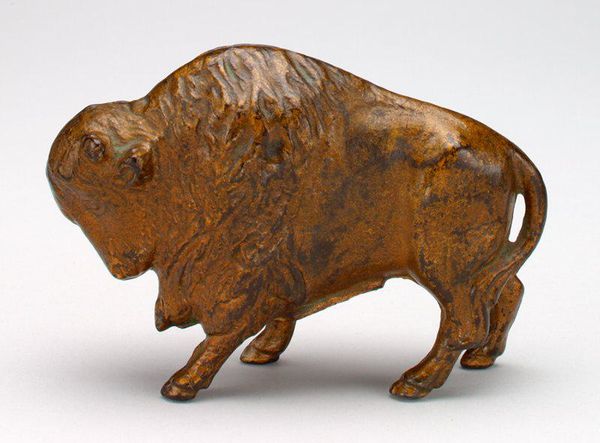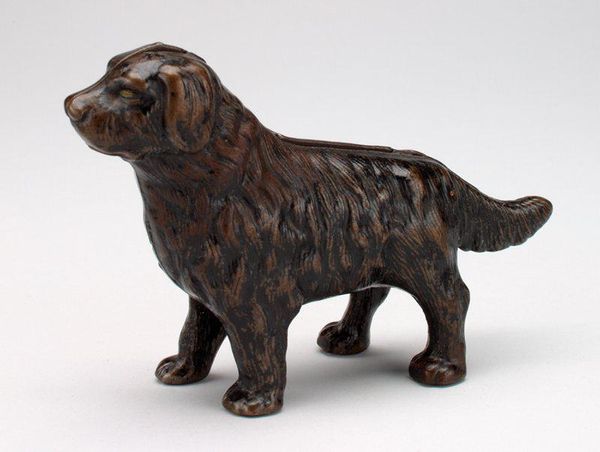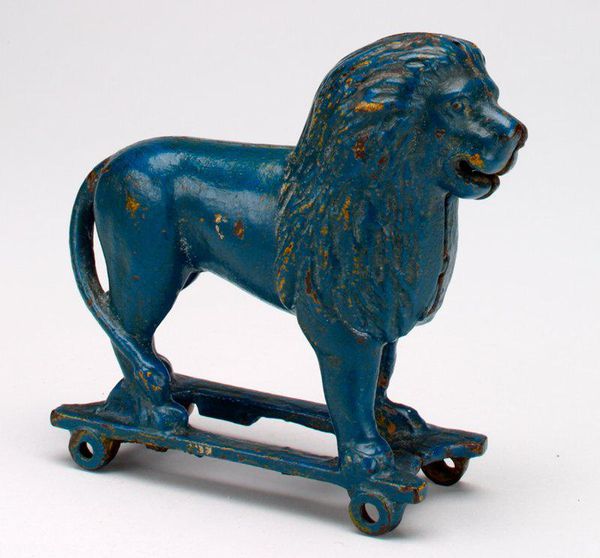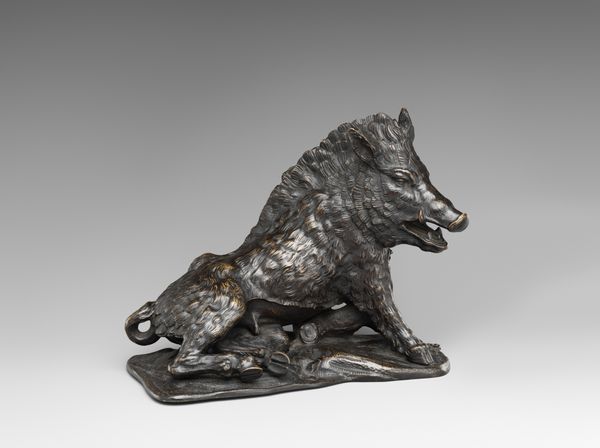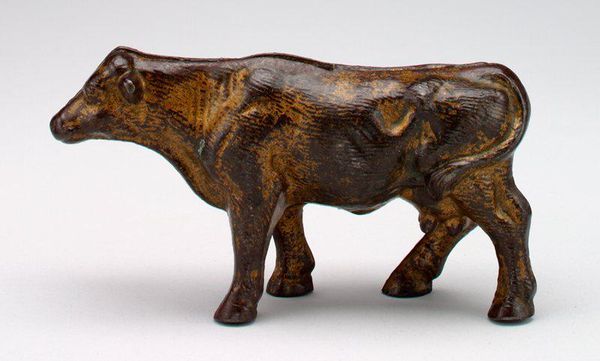
bronze, sculpture
#
bronze
#
figuration
#
sculpture
#
decorative-art
Dimensions: 3 9/16 x 4 1/2 x 1 3/8 in. (9.05 x 11.43 x 3.49 cm)
Copyright: No Known Copyright
Curator: This bronze sculpture, entitled "Lion," was produced around the 1920s by the A.C. Williams Company and resides here at the Minneapolis Institute of Art. Editor: Immediately, I'm struck by how substantial yet worn the piece appears. The color variations in the bronze suggest its history, as if it holds stories in its very texture. Curator: Indeed. The lion as a symbol is richly layered across cultures. We see the animal as representing power, royalty, pride, and even courage. I think considering the sculpture's creation in the 1920s offers insights, particularly concerning gender and race. What was this company aiming for in representing this animal? Editor: Precisely. As a mass-produced decorative object, it moves from artwork to industrial craft, inviting questions about its cultural context and accessibility. The production process implies standardization, yet there’s handwork visible in the patina and possible mold variations—revealing the labor and materiality behind each object. The fact that is not signed by an artist places further emphasis on craft and industry of that time. Curator: Considering labor as you said, who are we thinking about that was making these figures, what were their conditions of work, and the wages being paid, to allow for mass consumerism and consumption? The lion may carry noble connotations but are we looking at exploitation behind its production, to create and establish its symbol of power? How might gender also influence design considerations in the crafting of a symbol traditionally linked to ideas of masculine dominance? Editor: Absolutely. I see how this also ties to systems of social mobility, the consumption of these symbolic meanings, or aspirations, that also may exclude its workforce. We see these bronze objects not only as sculptures but also as small monuments to consumption of those meanings and access to them. Curator: That's a compelling perspective, shifting our view to those power dynamics inherent not just in art production but also in broader social power structures. Editor: Examining "Lion" has been a study in contrasting symbolic intentions and production realities. Curator: It challenges us to decode what this sculpture signifies in the grander historical narrative.
Comments
No comments
Be the first to comment and join the conversation on the ultimate creative platform.

